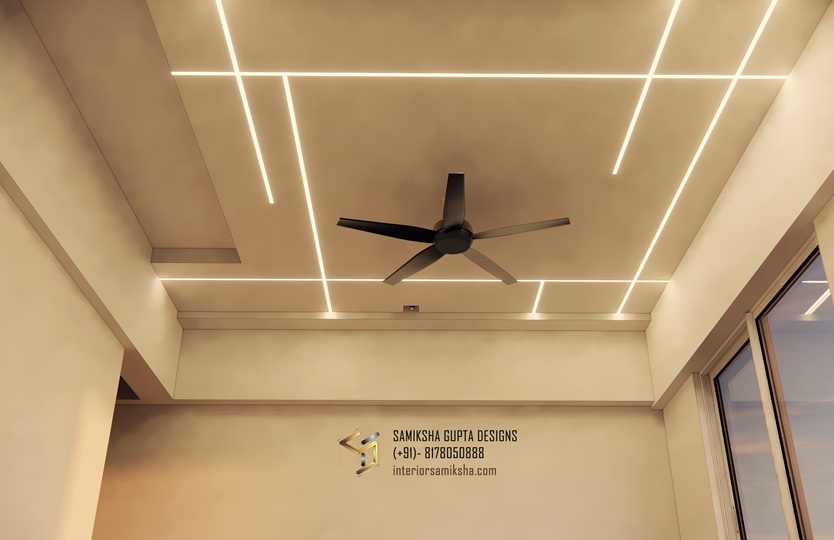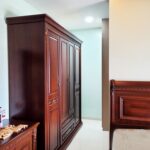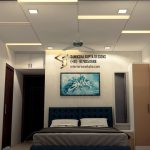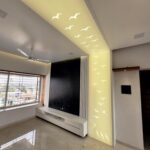The use of profile lights in interiors is becoming quite prevalent and trendy these days. They create a sophisticated and subtle atmosphere. Profile lights are also a unique way to highlight artwork, architectural features, and other decorative elements in a room.
This lighting technique is increasingly popular in contemporary interior design, not just in residential, but also in commercial spaces.
Before I go on and tell where and how we use the profile lights in interiors, let’s understand first…
What are Profile Lights?
Profile lights are LED strip lights installed inside an aluminium channel. It gives out a diffused light through the acrylic covering on the channel. You can install the profile light on the edge of the wall, ceiling or any architectural feature.
Because the LED strip is not directly visible, it gives a soft glow of light that highlights the texture and shape of the object that’s being lit. Profile lights can be used to give a subtle accent or a dramatic effect, depending on the intensity of the lights and their placement.
Advantages of using Profile lights in interiors
One of the many advantages of profile lights is that it is energy-saving. LED lights consume much less energy in comparison to traditional lighting fixtures. This makes profile lights more eco-friendly and cost-effective.
Additionally, these are easy to install and can be tailored to suit the preferences and needs of the designer or the homeowner. I have shown one example of how you can do that later in the article. Keep reading!
Another benefit of profile lighting is that it is quite versatile. You can use it to highlight an array of design elements, such as baseboards, crown moulding, and architectural columns.
Here, I have used the profile lights in a random sequence in the rafters above a shoe cabinet that’s finished in MDF and Duco paint. It lights up the overall black and monotonous look of the whole unit.
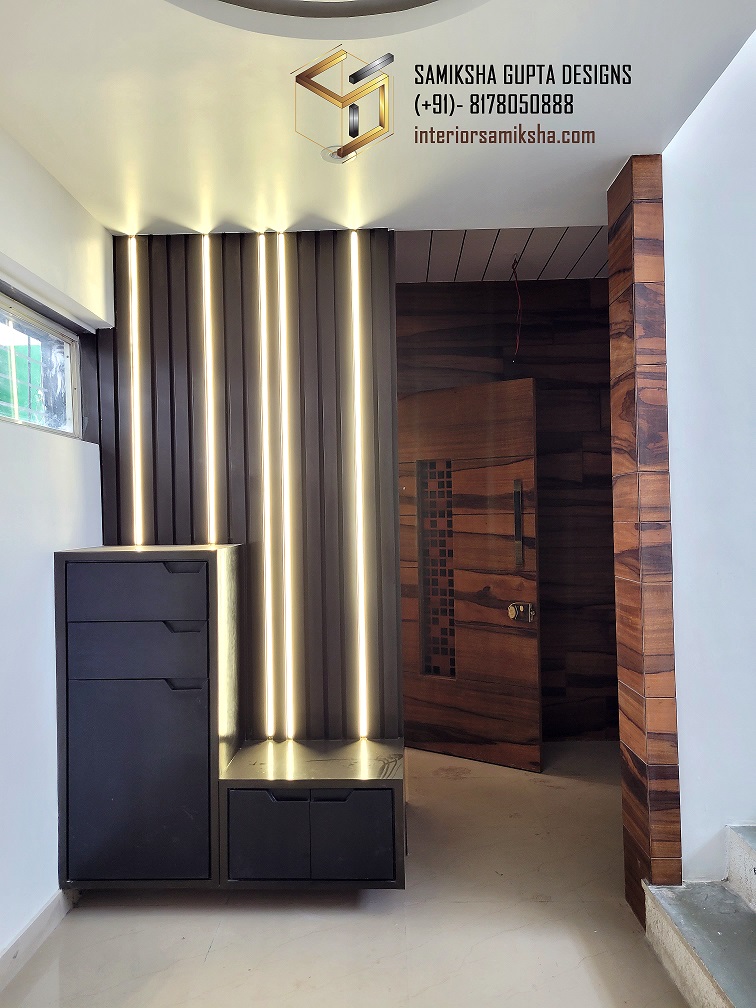
Profile lights can help in creating a specific ambience or mood in a room. For example, you can create a romantic atmosphere in a bedroom with warm LED strip lights in the profile lights or you can create a calming effect in a yoga studio or a spa.
Profile lights are also used heavily in commercial spaces, such as restaurants, retail stores, and hotels. The lights help in drawing attention to specific products or areas of the space. It can also be used to create a specific brand identity or aesthetic.
What to Keep In Mind Before Installing Profile Light In the Interiors
It’s important to consider the overall design theme and the desired effect while using profile lighting in an interior space. The brightness of the light and the colour temperature can be adjusted to achieve the desired result.
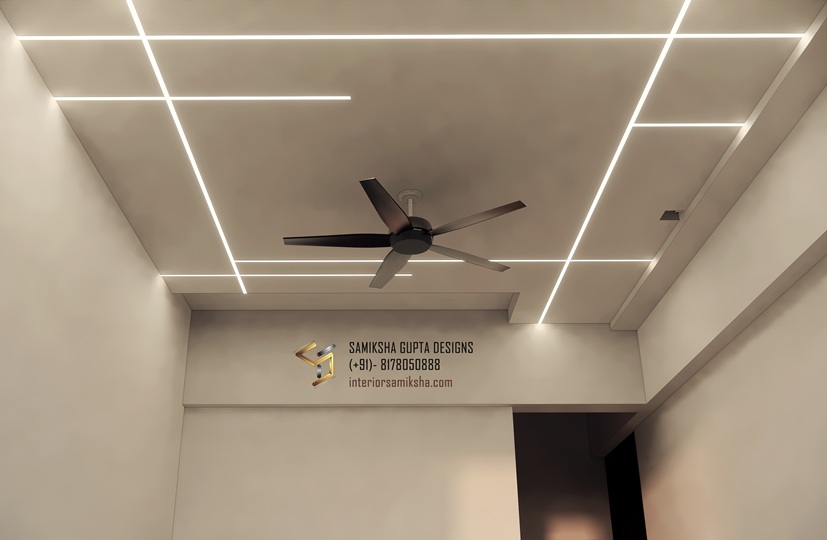
It’s also essential that you choose the RIGHT TYPE of profile lighting for the space. There are many different types of profile lights available these days, ranging from discreet and thin to more prominent and substantial.
Profile Light In False Ceiling
Here I have installed a profile light in the false ceiling of a living room. The client wanted a cooler feel in the living space. So, I tried to play with a more natural tone by giving profile lights and panel lights in cool white colour while the cove lighting was chosen in a warmer (yellowish) tone.
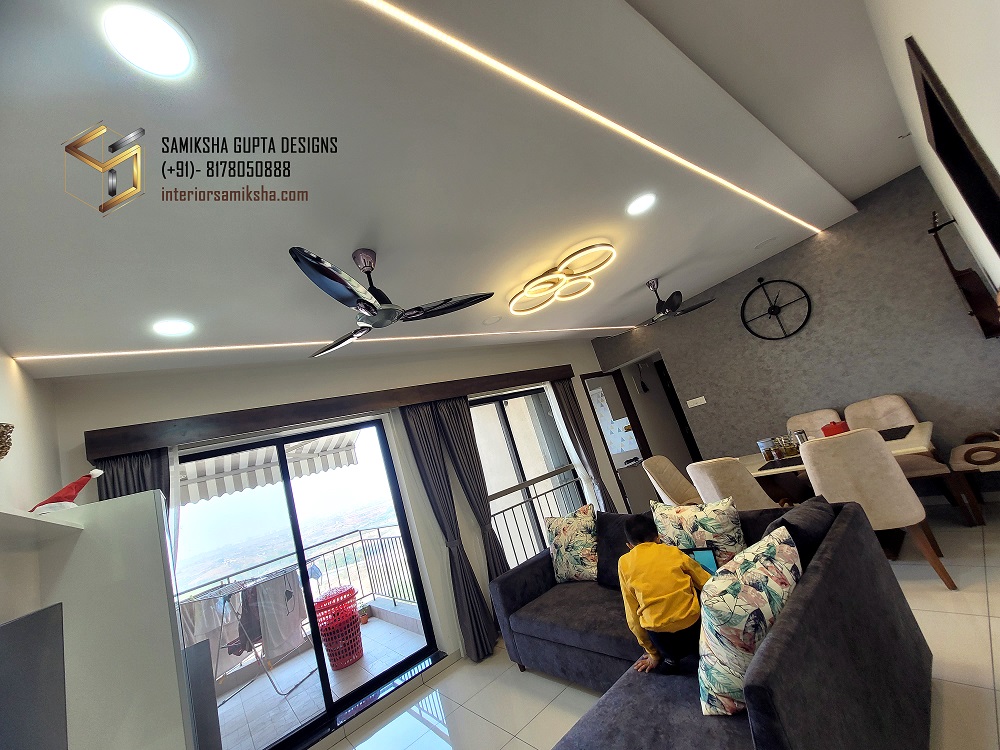
There are a few technicalities that need to be considered while selecting the right profile light for your interior space.
1. The width of the profile light.
Profile lights come in different widths from 4mm to 55mm. Select the one that best suits your space.
2. The cost of the profile light
It’s pretty obvious the bigger the light, the bigger the price. It’s mainly because, in wider profile lights, more LEDs in one strip light are required inside it for an equal distribution of light throughout the profile.
3. The colour of the LED strip light
The colour of the strip light will be decided whether you want a warmer, natural or cool light. The right selection of colour temperature will help you get the desired result. It’s measured on the Kelvin scale.
4. The number of LED lights in the strips.
Usually, I suggest a 240 LED/meter strip for the profile light. It helps in achieving a more diffused and brighter profile light effect. 120 LED/meter strip can give a very dotty look after installation.
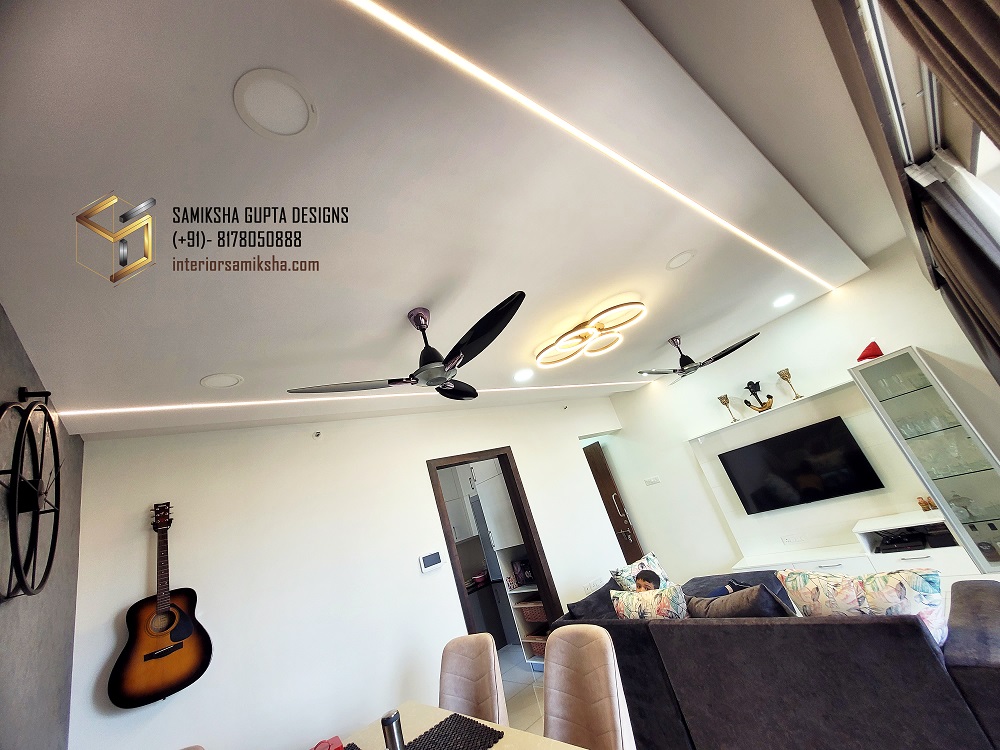
So if you’re looking for a warmer feel in the space, you might want to go for a light temperature that lies between 2700-3000K. Similarly, a more neutral or natural light has a range of 3000-5500K and cool white light has a colour temperature in the range of 5500- 6500K.
You don’t necessarily have to use profile light in interiors in straight lines. You can also create shapes and play around a bit with designs. Here’s an example.
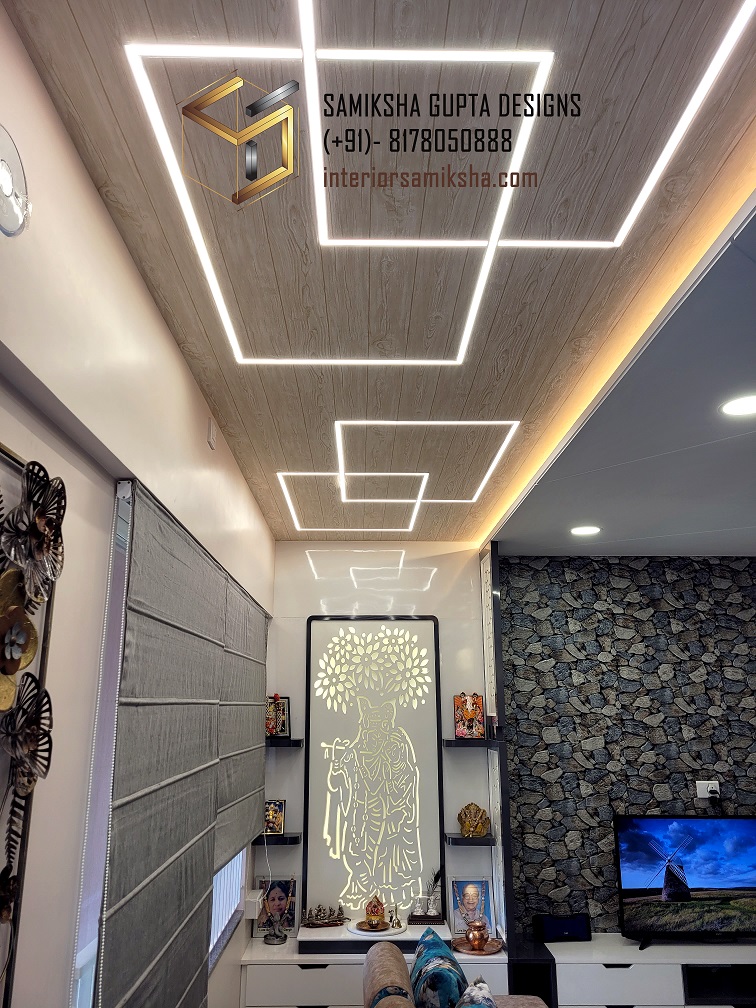
I created a crossed boxes pattern with profile lights in the false ceiling with a wallpaper base in a wooden finish. This not only looked magnificent but is also quite cost-effective. You can try something like this out too! Just need a bit of creativity and some Pinterest images to help you get some ideas.
If you’re not so sure what type of light you should have in different areas, you might want to hire a design consultant or a lighting consultant that can help you out. They can guide you what’s the recommended lighting type in different spaces according to the area functionalities.
CONCLUSION
Profile lighting is an impactful way of enhancing the aesthetic and ambience of interior space. It’s an energy-efficient and versatile lighting solution that can be used for highlighting architectural features, decorative elements and artwork.
No matter where it’s used, be it a commercial setting, or residential, profile lighting can add a touch of elegance and sophistication to any space.
If you still feel puzzled, feel free to connect with me and let me guide you through it. You can also leave a comment here if there’s anything you want to be added to this article.

